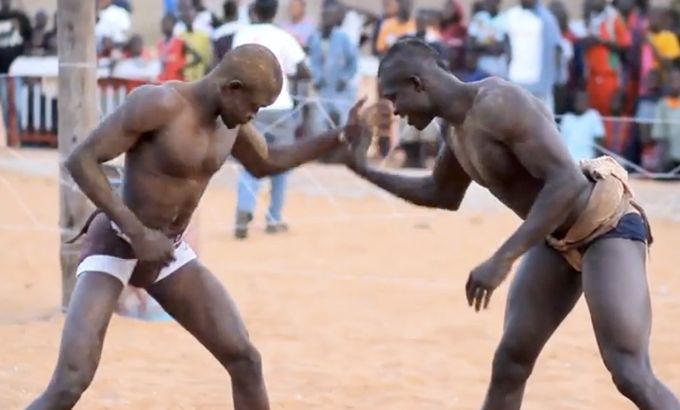
Wrestling in Dakar
We follow the story of five young Senegalese men competing for the chance to become professional wrestlers.
Traditional wrestling, or “laamb”, is arguably Senegal’s national sport, exceeding even football in popularity.
Matches, usually held in open-air arenas, are social and cultural events with fighters and spectators enacting rituals with a significance that date back hundreds of years. The top tier of champions can earn up to $100,000 a fight, an unimaginable sum of money to most Senegalese, and the dream of becoming a professional wrestler spurs on many young men, for a few years at least.
Keep reading
list of 4 itemsThe surfer chef behind South Africa’s first fine dining halal restaurant
Hinglaj Yatra Hindu festival brings mountainous region in Pakistan to life
US returns ancient artefacts looted from Cambodia, Indonesia
In the down-market suburb of Pikine in the capital Dakar – where 70 percent of the population are under the age of 25 and more than half the population lives on or below the poverty line – five friends are determined to become wrestling stars.
Thiam, Lamine, Abdou, Cissokho and M’Baye have opened their own, informal, wrestling school and train for hours every day. Their hope is to catch the eye of one person in particular – Madame Ndeye Ndiaye Tyson, one of Senegal’s leading wrestling promoters, and a woman who did not let her illiteracy stop her from rising to the top in a male-dominated sport. Madame Tyson selects just one youth at a time to promote and mentor.
In Wrestling in Dakar, we follow Thiam and Modou Faye as they train for neighbourhood matches which they hope will set them on the road to success, and by understanding their lives come to learn something more about Senegal today.
FILMMAKER’S VIEW
By Edward Porembny
The making of my film Wrestling in Dakar has been a difficult, and at times, very rich experience. In the initial stages of production I very quickly realised the type of challenges I would face but it was exactly these challenge that made me want to do this film even more. Nevertheless, the reality surpassed me. Although I was on the verge of exploding with frustration on several occasions, I never wanted to give up. In the end, with the help of several dedicated crew members, we managed to do what we think is a very good film.
I wanted to learn why wrestling evoked such passion in Senegal today. I saw some cultural parallels with Poland, where I come from originally, and I found in the Senegalese the same pride and desire for success that I found with the Polish.
In addition, Senegalese people have this unique sense of business; everybody there wants to make money, and every event is a good opportunity to make it.
As a white person in Senegal, you can be sure that every day you will have several propositions to do a “fantastic” business deal. Very often somebody will try to convince you that their business idea will change your life forever.
The fact that we looked so different was a bit of a challenge for us as a production crew. We needed to know how to deal with people’s curious reactions to us. I am sure my reactions were often very strange to them as well.
Despite most of the country’s population following Islam, in which voodoo is strictly forbidden, magic is still a part of life for many people. I, myself, also had my personal voodoo experience when I was given a talisman to cure me of heartbreak when my relationship broke down. I also have another talisman that is supposed to protect me when travelling abroad.
With themes of love, hate, hopes, disillusions and convictions, this documentary is an invitation to a colourful, artful world and a reflection of human nature in a society forced to constantly fight.
All in all, while Africa can often evoke images of misery and conflict in the media, this documentary film also shows the positive aspects and interests of ordinary Senegalese people. Moreover, it conveys a message that there is hope for its population and that instead of immigrating illegally there is now a way to succeed in Senegal itself.